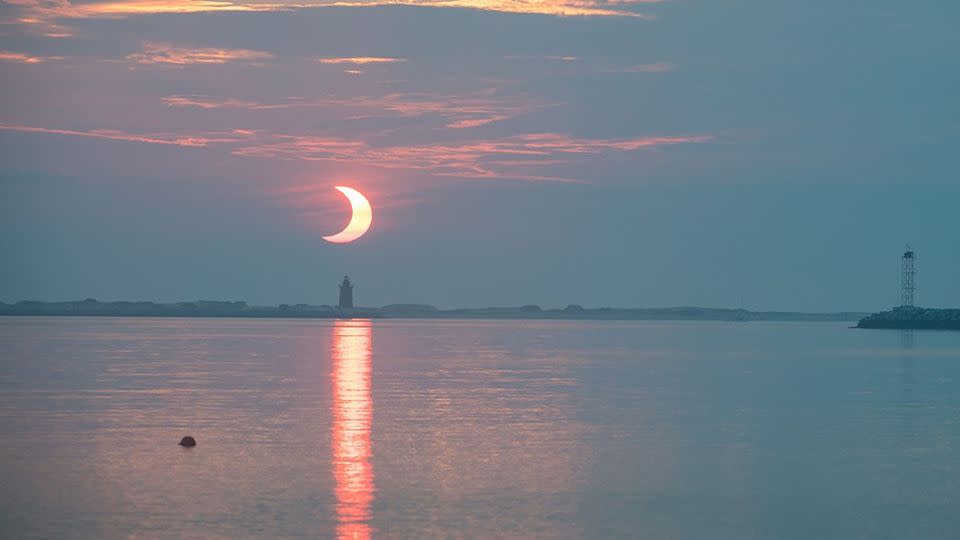A partial solar eclipse on Saturday will make it look as though the moon has taken a bite out of the sun over parts of the world. The celestial event comes just two weeks after a lunar eclipse created a “blood moon” in the night sky.
A partial solar eclipse occurs when the moon moves between the sun and Earth but the celestial bodies aren’t completely aligned, according to NASA. The moon only blocks part of the sun’s face during a partial solar eclipse, creating a crescent shape.
During Saturday’s celestial event, the moon will appear to pass in front of the sun and partially block it, throwing a shadow over parts of Earth’s Northern Hemisphere.
Remember, no part of a partial solar eclipse is safe to view without proper eye protection, so dig out your solar filters or solar eclipse glasses to view this celestial event safely.
Where to see the partial solar eclipse
The partial eclipse will be visible in parts of North America, South America, Africa, Europe, northern Asia, and across Greenland and Iceland, according to NASA. Only about 44,800 people will be able to witness a 90% partial solar eclipse, according to Time and Date.
The eclipse will begin near the northern coast of South America at 4:50 a.m. ET (8:50 GMT) and peak at 6:47 a.m. ET (10:47 GMT), and the last bit of the partial eclipse will end over far northern Siberia at 8:43 a.m. ET (12:43 GMT), according to EarthSky.
Most of the continental United States will not bear witness to the eclipse, but parts of Northeastern states such as Maine, Massachusetts and New York, and Canadian cities including Montreal, Ottawa, Halifax, Nova Scotia, and St. John’s, Newfoundland and Labrador, will see some portion of the sun’s face blocked by the moon during sunrise, according to Time and Date.
Meanwhile, it will be later in the morning for observers in Western Europe and northwestern Africa, and afternoon and early evening for viewers in Eastern Europe and northern Asia.
Check Time and Date’s website to see what is expected in your area and how long the eclipse will last, weather permitting.


